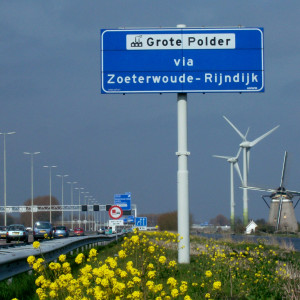No extra freight delays from NL-Germany road border checks


The first month of new road border controls between Germany and The Netherlands resulted in an actual fall in freight traffic delays, rather than any anticipated rise, new data suggests. Road haulage firms and representatives had voiced concerns that new ad-hoc border checks that were re-introduced in early December might have led to disruptions in freight traffic movements, specifically increased waiting times. But Transpereon, the global transportation management platform which has published the data four weeks after the controls were brought in, showed that had not been the case.
Waiting times experienced by hauliers were, in fact, lower than the previous year though no reasons are given for this. The only changes to this pattern had been as a result of the Christmas period, which was just put down to being a seasonal anomaly. "Although the government announced that the planned mobile controls at the Dutch border, instead of stationary controls, were not expected to have an impact on international traffic and trade, professional freight transport organisations were concerned about possible disruptions to traffic, specifically an increase in waiting times," said Transporeon.
Publishing data showing daily average and seven-day rolling averages of waiting times at the five most frequently-used borders between Germany and The Netherlands, Transporeon said that with over 20 million annual truck movements within its findings, these latest border crossing figures 'represent a representative sample of heavy truck traffic'.
An actual fall in delays
"A detailed analysis shows no measurable effect of the controls implemented after December 9," said Transporeon. "Both daily values and weekly averages remained stable, with current waiting times even lower than the previous year. Although there was a slight deviation during the Christmas period, this cannot be attributed to a structural effect due to the new border measures." Part of the Trimble company, Transporeon's data hubs provide important insights into logistics activities, market developments and CO2 emissions and also ensure increased transparency in the supply chain through insight.
It is used by more than 1,400 shippers and retailers, and 150,000+ carriers and logistics service providers. The report brings into focus some of the wider concerns of the industry, most notably from the European Association of Abnormal Road Transport and Mobile Cranes (ESTA). It has been vociferous in its concerns for the future of the abnormal transport sector, calling for the elimination of country-specific barriers, supported by a network of secure parking areas, in order to help streamline cross-border freight movements.
These were contained in its five-year manifesto, outlining its short to long-term priorities. The manifesto, Competitive and Harmonised Abnormal Transport in Europe[1], says that road transport operators currently have to contend with country-specific measures which, says ESTA, 'do not improve safety, but rather affect badly competitiveness and effectiveness of the sector'. "ESTA is calling for all these measures to be evaluated at the European level and, where necessary, to be harmonised or abolished," says the manifesto.
Call for measures to be abolished
It has now joined forces with ESPORG, the European parking organisation, to begin discussions with the European Commission on how to try and expand the provision of safe and secure truck parking areas, with a special emphasis on abnormal and heavy transports.
It has sent a position paper to the commission, setting out its aims. Among ESTA's goals are the EC producing a report analysing parking capacity on European motorways accessible for abnormal transporters, a revision of the eligibility criteria for projects funded by EU funds via the Connecting Europe Facility, to ensure that safe and secure parking places are adapted to the specific needs of abnormal transport, and better provision of abnormal transport parking facilities to be aligned with permitted routes Ton Klijn, Director of ESTA, told the commission: "We trust our comments in this position paper will give a clearer picture of the typical hinderances the abnormal transport companies meet when using present parking facilities and the possible solutions to mitigate these problems."
Sign up to the Project Cargo Journal Newsletter
You just read one of our premium articles free of charge
Want full access?
Take advantage of our exclusive offer
References
- ^ Competitive and Harmonised Abnormal Transport in Europe (estaeurope.eu)
- ^ See the offer (www.projectcargojournal.com)